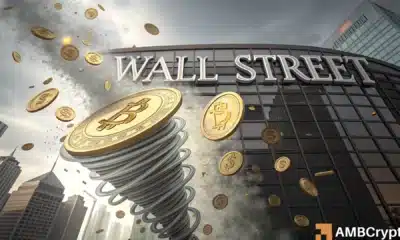Altcoin
Ripple [XRP] surges in this country, but pump-and-dump fears rise
![Ripple [XRP] surges in this country, but pump-and-dump fears rise](https://ambcrypto.com/wp-content/uploads/2023/04/XRP-1000x600.jpg)
- XRP’s trading volume across major South Korean exchanges jumped in the last week.
- There were concerns that Korean traders were pumping and dumping XRP.
One of the biggest talking points in the crypto space over the last few weeks has been the meteoric rise of Ripple [XRP]. Ripple Labs, which has been locked in a controversial, two-year-long lawsuit, saw the price of its native token surge 15% over the last seven days and nearly 16% from what it was a month back, data from CoinMarketCap revealed.
Is your portfolio green? Check the Ripple [XRP] Profit Calculator
Interestingly, a lot of action is happening on South Korean-based crypto exchanges. Over the past 24 hours. XRP was the fourth most-traded asset
on Upbit, the country’s largest exchange, and accounted for over 6% of the exchange’s total trading volume. A few days back, XRP’s share was almost 28%, surpassing cryptos with larger market cap such as Bitcoin [BTC] and Ethereum [ETH].On the other hand, it captured a whopping 22% of the total volume on Bithumb, another major exchange.
But are the numbers misleading?
XRP surged due to wash trading?
Historically, South Korean exchanges have witnessed higher price of popular tokens as compared to foreign exchanges. This phenomenon is called Kimchi Premium and is driven by a high demand for cryptos in the country.
While this can be conducive for arbitrage trading, South Korea’s stringent capital controls, which restricts the flow of money that can move out of the country, make it cumbersome and unprofitable.
To offset this, Korean investors routinely indulge in schemes like pump-and-dump. This was highlighted some time back by the CEO of blockchain analytics firm CryptoQuant.
Korean exchange: Withdrawals will be temporarily suspended.
Market Manipulators: Fuck yeah ? pic.twitter.com/p7juk2C28Y
— Ki Young Ju (@ki_young_ju) December 22, 2021
A big part of this is achieved through wash trading, a form of market manipulation, where traders buy and sell the same asset to inflate trading volumes and give an illusion of liquidity.
Once the price has increased significantly. traders then sell their positions, which leads to a fall in prices. In this case too, after reaching a five-month high on 29 March, XRP’s price retreated 8% until press time.
Realistic or not, here’s XRP’s market cap in BTC terms
Is momentum about to shift?
Meanwhile, due to the latest rally, XRP’s MVRV Ratio hit its six-month high on 29 March but retreated following the peak. The growing MVRV Long/Short Difference implied that long-term bulls were realizing profits if they were to sell their tokens.
As highlighted earlier, XRP’s price dropped since the peak on 29 March. Since then, the number of long positions taken for the coin steadily decreased and the Longs/Shorts Ratio dipped below 1 at press time, per Coinglass.

